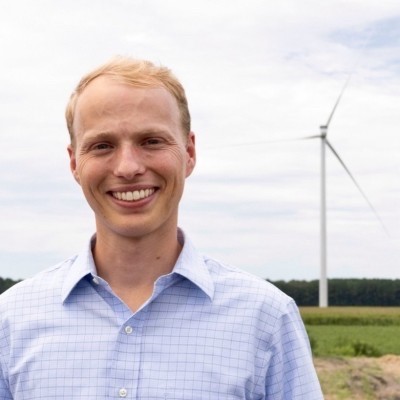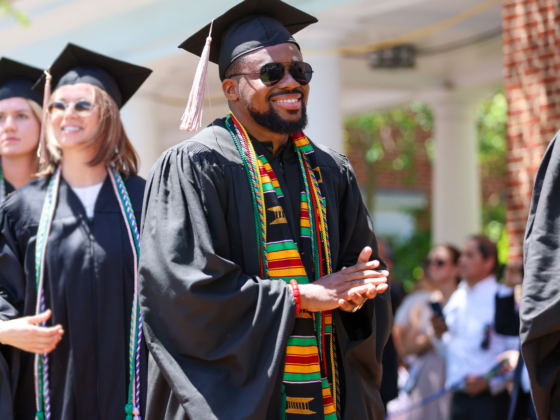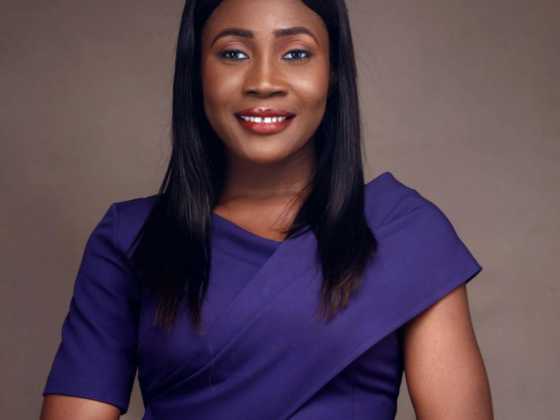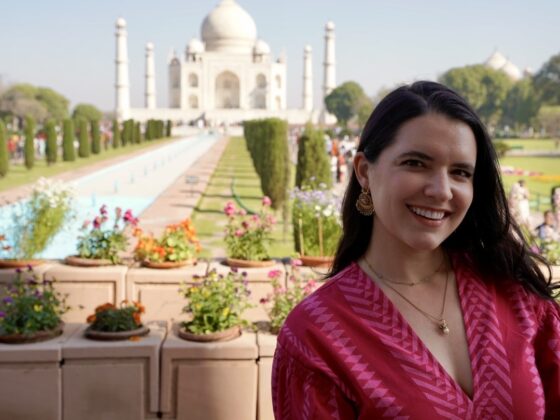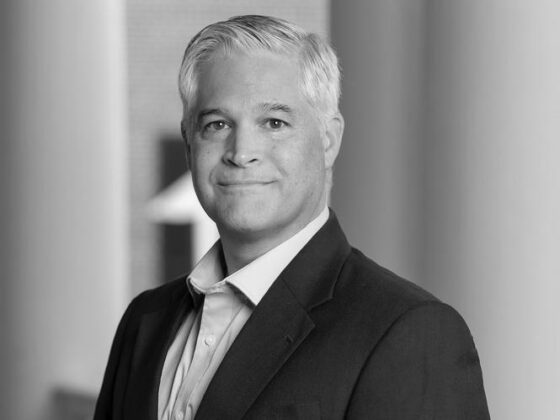Andrew Yowell is a second-year MBA candidate (Class of ‘25). Prior to Darden, he worked as a consultant focused on energy procurement and decarbonization strategy. After graduation, he will join U.S. Bank’s Environmental Finance group, where he will invest in renewable energy projects across the United States.
- Tell us about yourself, Andrew!
I grew up in Atlanta, Georgia and lived there 26 years before coming to Charlottesville. My father, two older brothers, and I are avid golfers, so we always look forward to our annual family vacation for the “Yowell Cup,” which is reaching its 13th year of play in 2025! The Yowell Cup destination plans rarely center around shopping, beaches, or historical attractions, so we are also blessed to have a supportive mother who enjoys spending time with her boys on the golf course. We are fortunate to have golf as a time to bond and compete, but the game of golf has also helped me develop an appreciation for spending time outdoors and connecting with nature.
Professionally, my father and two older brothers built their careers in the real estate industry, but I quickly found myself straying from the pack when I decided to study industrial engineering at Georgia Tech and work in consulting. After my first two projects as a generalist, I was asked to join the firm’s energy team. I went, with hesitation, but I was quickly enthralled with the complexity of energy markets and the massive scale of investment in renewable energy, energy security and the market’s growing demand. I felt compelled to contribute and capitalize on these trends by gaining a more structured and rounded education in finance and management, while giving myself time to consider how I approach this rapidly changing market.
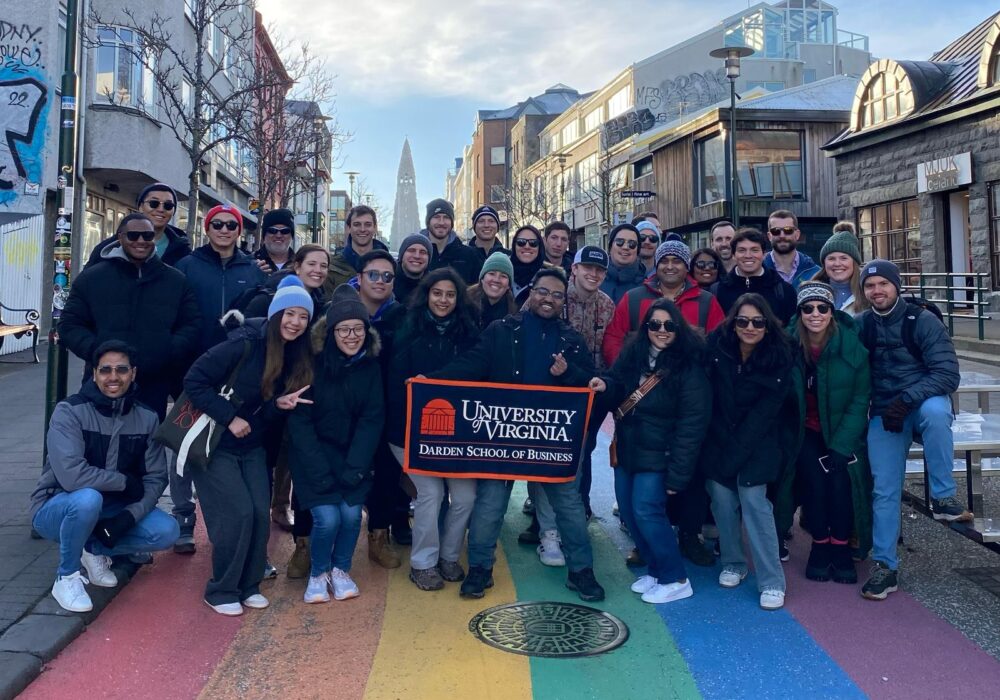
2) Before this course, what did you know about business in Iceland and Iceland’s approach to sustainability and energy? How did your expectations compare to reality?
I had a sense of Iceland’s abundance of clean energy, mainly geothermal and hydropower, and that the country took environmental sustainability seriously. Beyond that, I wasn’t aware of how energy and sustainability were aligned with business strategy or shaped the broader economy. I expected to see impressive renewable energy infrastructure, but I assumed the business lessons might be limited to this unique country with very different challenges than the U.S.
What I found instead was a highly integrated, strategic approach to energy and sustainability. At Norðurál, one of the country’s aluminum smelters, I was shocked by the volume of the plant’s electricity usage — about 25% of the country’s entire electric consumption — and yet it runs entirely on clean power. The economic partnerships between the smelter and the national utility showcased what’s possible when energy and industry work together toward long-term goals. On a different end of the spectrum, Kerecis was a great example of how sustainable innovation can drive economic prosperity. By using leftover cod skins from Iceland’s fishing industry to make skin grafts, they’ve turned waste into a high-margin medical business and redefined an industry “byproduct” into an industry “coproduct.”
These experiences showed me that in Iceland, sustainability isn’t just a buzzword — it’s deeply tied to how companies grow and compete. I left with a new appreciation for how clean energy and an economic use of resources can support not just the environment, but also resilient business models.
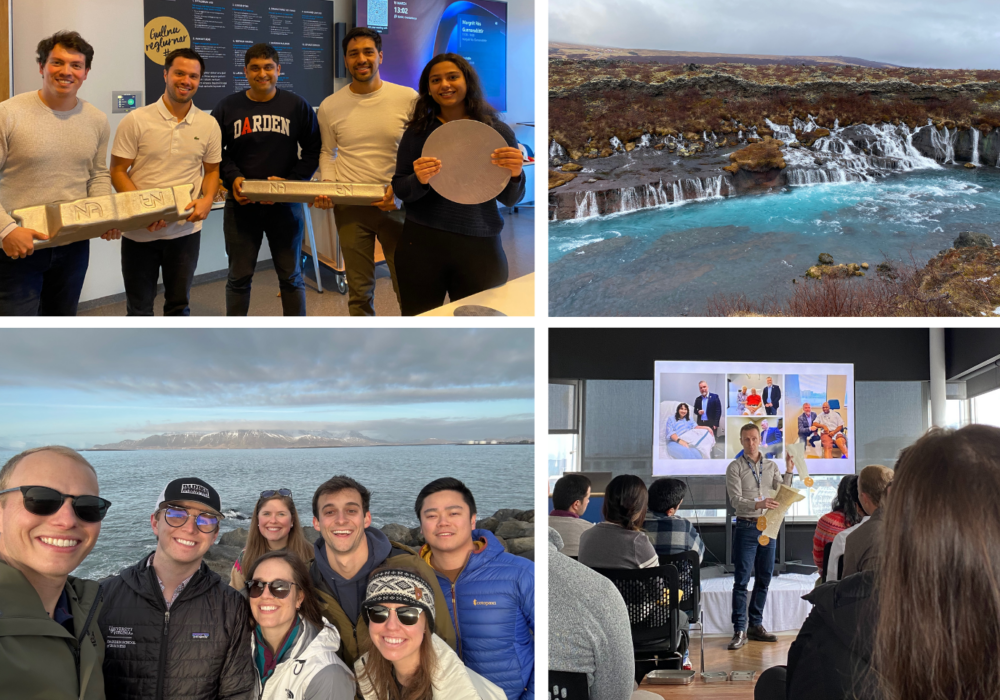
3) Can you share a specific moment or experience during the course that deeply resonated with you?
While I gained a great deal from visiting Icelandic businesses and learning about the country’s approach to energy and sustainability, one of the most powerful moments for me happened outside of the classroom. Before the formal program began, a group of us road-tripped to Vík, a small town on the southern coast. Along the way, we stopped at a handful of waterfalls — some popular, others tucked away off the main road. Even the more remote ones were stunningly accessible, and I was genuinely awestruck by the scale, clarity, and stillness of the landscape. It’s hard to describe the feeling of standing beneath a roaring waterfall with barely another soul in sight — it was humbling and energizing all at once.
That experience wouldn’t have happened without the structure and support of the Darden program. Being there a few days early gave us the freedom to explore, but it also set the tone for the week ahead — one where curiosity, openness, and immersion led to the most meaningful takeaways. The natural beauty of Iceland helped me slow down and reflect, and it framed the rest of the program with a sense of wonder that carried into our company visits and conversations.
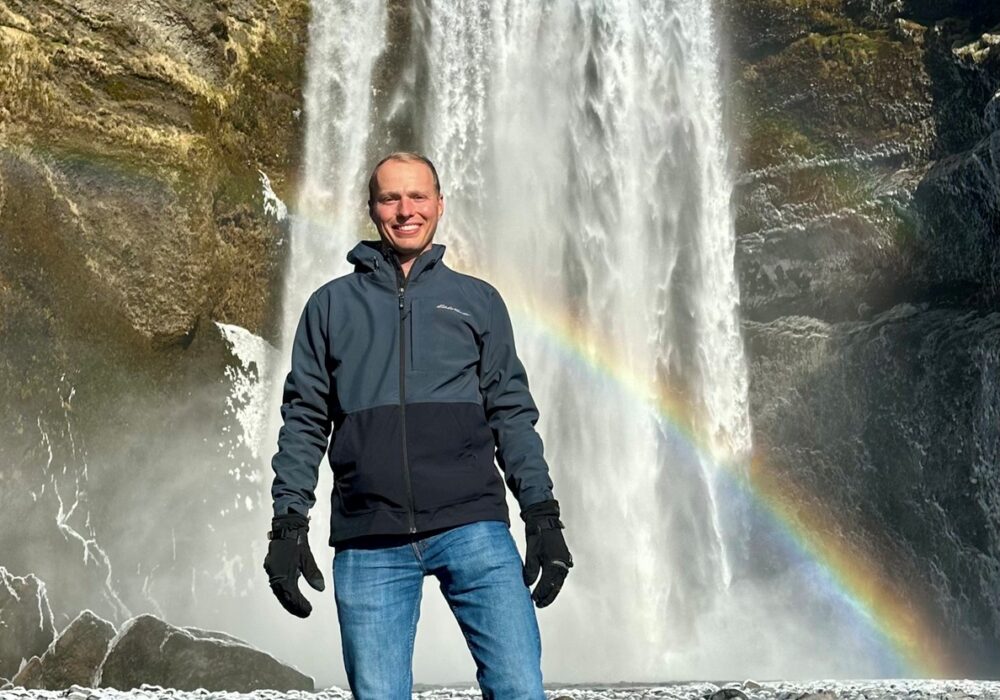
4) How do you think Iceland’s renewable energy model could inform energy strategy in other countries?
Although Iceland has a valuable and unique set of renewable resources, the geographic and environmental implications as an arctic island create economic challenges. For example, they have very limited plant-based agricultural resources, so they rely heavily on imports for grains and produce. That said, they find value in trade by embedding their abundant energy resources into their exports, such as aluminum. This strategy could be expanded across countries and sectors. The future of Iceland may find prosperity in data centers, chemicals or clean hydrogen. Other countries could adapt this model of innovation and comparative advantage by evolving their economy and applying resources toward more productive uses: Could India export cattle waste for biofuels? Could the U.S. utilize the growing penetration of EVs for backup power?
In general, every country is uniquely positioned with a set of resources for productive use. The strategy for each country to capitalize on those resources should be constantly innovating for optimal supply, security, resiliency and productivity.
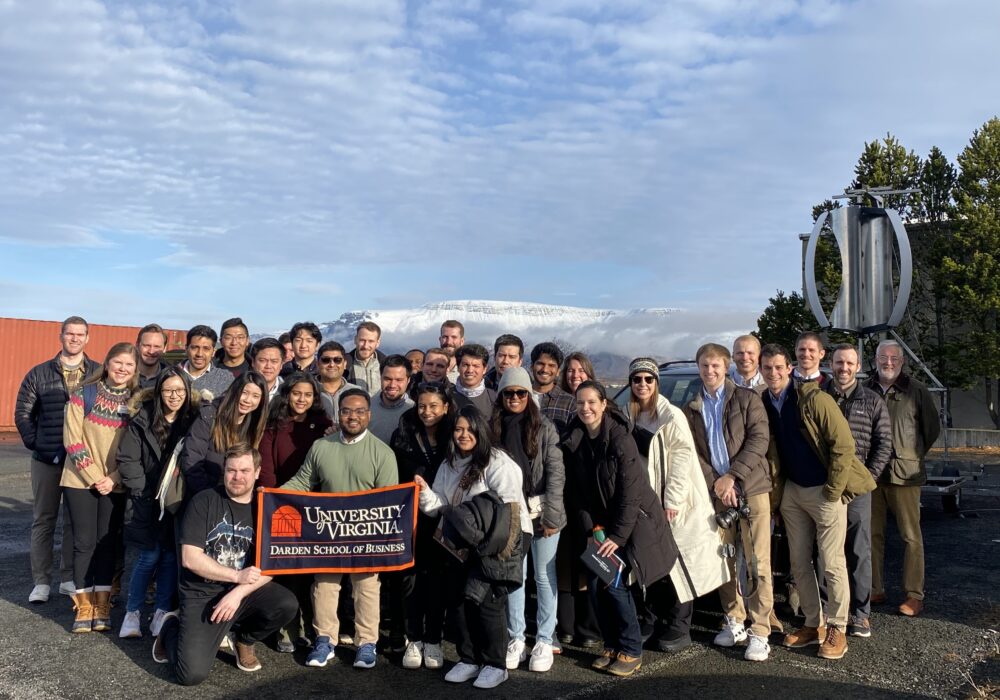
5) How do you plan to apply what you learned in Iceland to your future career?
One of the biggest takeaways from Iceland was recognizing how I have taken the scale and diversity of the United States economy for granted. Iceland’s economy is small and relies heavily on just a few key sectors, which makes it nimble in some ways but also more vulnerable. In my future career, I want to embrace the competitive advantage that comes from operating in a country with deep capital markets, a wide range of industries, and the ability to experiment regionally. The United States has its challenges, but it also has an unmatched capacity for innovation when we embrace the strength that comes from our size and diversity.
At the same time, I was inspired by how strongly Icelanders preserve their identity, even as tourism continues to shape their economy and daily lives. I was especially struck by their tradition of Sagas — long, oral stories passed down through generations that preserve values, heritage, and national memory. That deep connection to culture and community reminded me of the importance of staying grounded, no matter how dynamic the professional world becomes. In my career, I hope to not only be part of growing industries, but also to contribute meaningfully to the communities around them. Iceland showed me that progress and preservation are not mutually exclusive — in fact, the strongest businesses may be rooted in a clear sense of place and purpose.
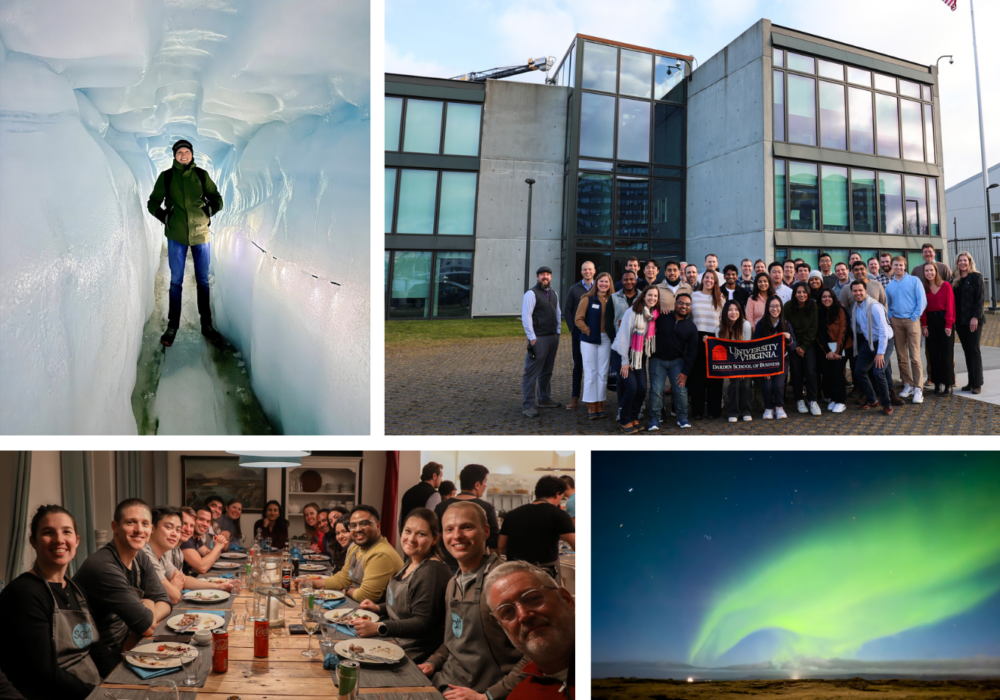
6) What would you say to a fellow student considering the Iceland DWC?
The weather isn’t that bad! You should be prepared for some wind and rain, but the environment and culture certainly make up for near-arctic weather. It is a country filled with immense natural beauty, deep cultural appreciation, lively food and drink, and truly innovative business practices. I was excited for the opportunity to visit a country I am unlikely to visit often — and furthermore, one where I would not otherwise be able to look behind the curtain of industry.
I would also encourage students to approach the course with an open mind. The magnificence of the program was built off making new friends, both Darden and Icelandic, and trying new things. Rent a car and drive parts of the Ring Road, try fermented shark (it’s bad), drink the Icelandic beverages, and ask the locals what they think of American politics. Be humble and courteous. You have little to lose and much to gain from the people of Iceland.

